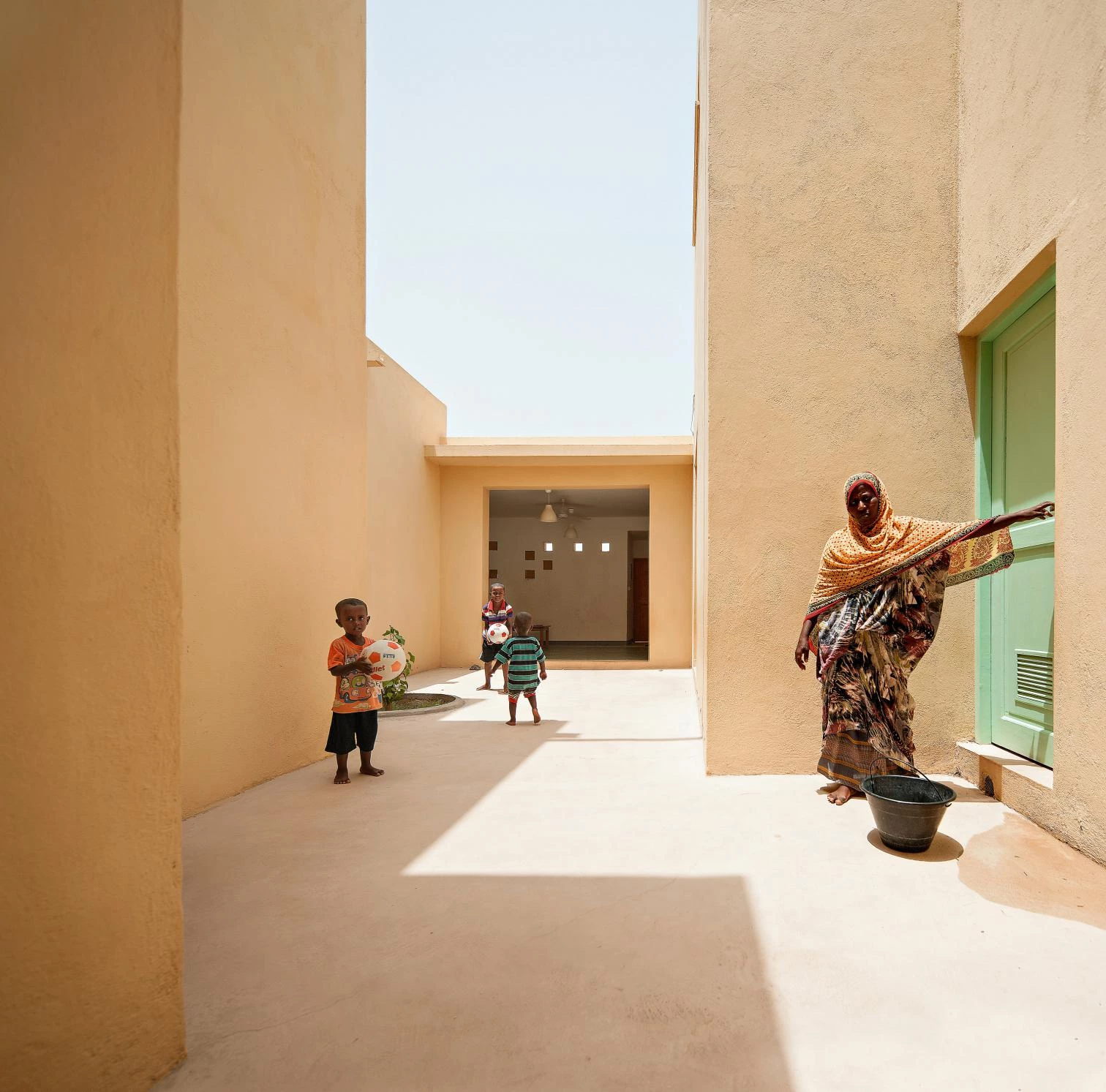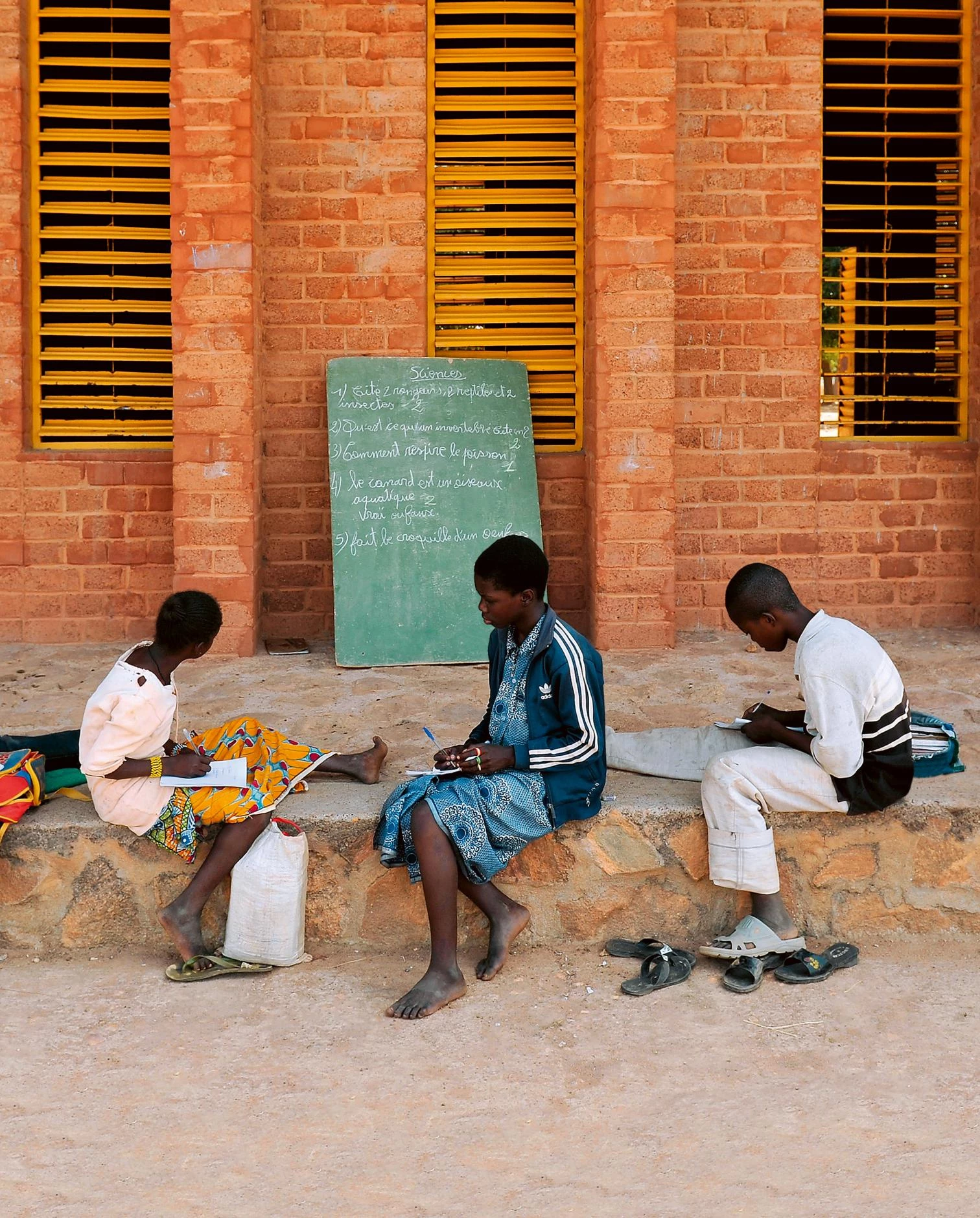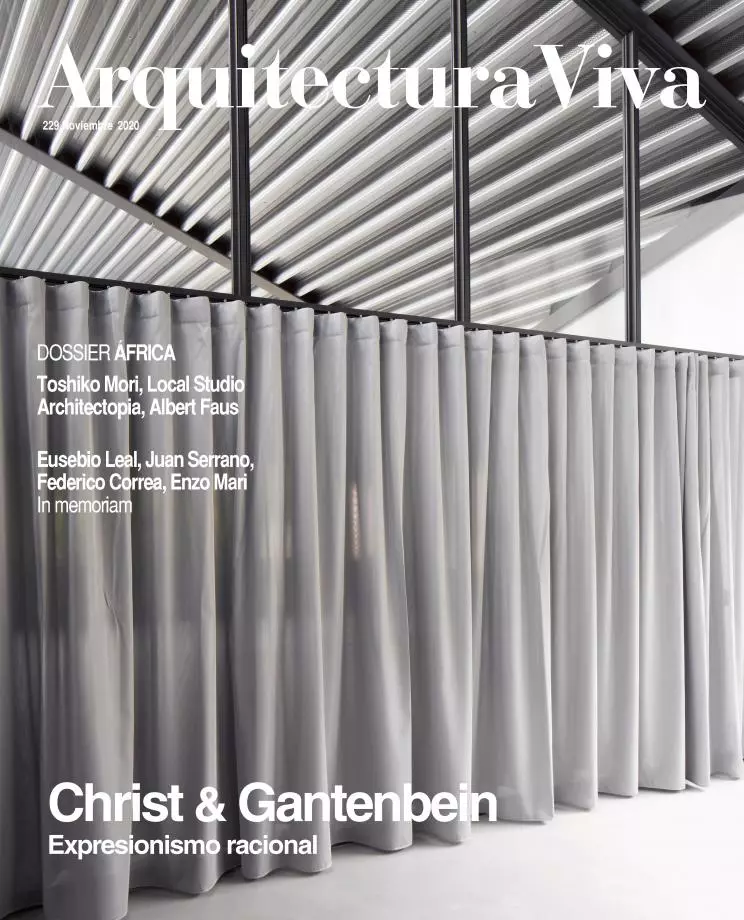Experiments with Africa Itself
Possible Futures

Urko Sánchez, 15 viviendas sociales en Tadjoura (Yibuti)
It would be hard to name a continent as ignored as Africa, or depicted in more simplistic terms. In Africa lay one of the cradles of civilization – not to say cradle of the human species. Its history has been dotted with moments of crisis but also of prosperity. And the many cultures that have inhabited this portion of Earth forged a maze of languages and artistic styles which in large measure remain a mystery to archaeologists and anthropologists. And yet the West’s imagery of Africa, essentially built on accounts of colonization, is disturbingly naive: poor Africa, bloody Africa, beautiful exotic Africa…
African architecture and architects have been prey to similar simplifications. General admiration for the symbolically and culturally rich historical architectures of the Dogon people, for example, has not compensated for all the abuse and scorn inflicted, and the result is a thinking so widespread that a lot of time will be needed to eradicate it: the notion that Africa, kept to the sidelines of the main currents of global civilization, unable to create its own version of modernity, wavers between mere imitation of imported models and the search for a near-impossible ‘African identity.’
Of course a case can be made for both extreme opinions of Africa. Weakened by persistent economic and political crises, Africans can hardly resist the winds of globalization that blow in from powers like China, which has managed to export its banal urbanization model to certain areas of Africa. On the other hand the bid for ‘Africanity,’ with the attendant quest for its architectural expression, is largely a failed project considering the cultural, social, and economic diversity of the countries that form the continent.
Notwithstanding, international figures like David Adjaye or Francis Kéré as well as small local practices and foreign architects busy working in situ have demonstrated that other roads – and other futures – are possible. Futures in which African architecture will neither bend to identitarian impulses nor renounce the very best of its typological and constructional traditions. And futures where building in Africa neither means making literal copies of imported models nor rejecting the cosmopolitan drive and the opportunities that globalization does offer. These contradicting but potentially fruitful approaches come to the fore in the four projects that are featured in the following pages, all of them strong in social commitment and tectonic good sense: the School and Residence in Fass (Senegal), by Toshiko Mori; the Limpopo Youth Hostel in Bela-Bela (South Africa), by Local Studio; the Eco Moyo Kindergarten in Dzunguni (Kenya), by Architectopia; and the Secondary School in Youlou (Burkina Faso), by Albert Faus.

Francis Kéré, Escuela primaria, Gando (Burkina Faso)





